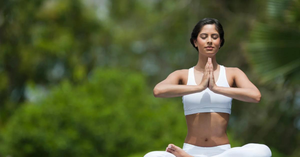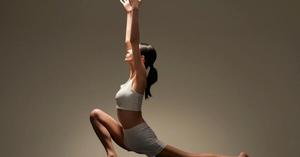“When the body moves with grace, the mind follows with peace.”
Many women experience fluctuating energy levels, stiffness, or mood dips throughout their menstrual cycle. These changes are deeply tied to hormonal shifts estrogen, progesterone, and cortisol influencing everything from joint flexibility to emotional stability. A balanced mobility and stretching routine can restore not just physical comfort, but also emotional steadiness.
Take Ananya, for instance, a 27-year-old designer who often felt bloated and achy before her period. Instead of pushing through with high-intensity workouts, she began integrating a 20-minute mobility flow. Within weeks, she noticed fewer cramps, lighter legs, and a calmer mood, an effect now backed by several clinical findings on movement and menstrual wellness (PubMed ID: 34967203; 36211042).
Flexibility is not just about stretching muscles, it’s about balancing the nervous system and maintaining circulation.
During the luteal and menstrual phases, progesterone rises, often causing muscle tightness and fatigue. Gentle mobility work increases oxygen flow and reduces cortisol, supporting both physical and emotional relaxation.
Studies in the Journal of Physical Therapy Science (2019) indicate that women who engaged in low-intensity mobility exercises during their luteal phase experienced a 25% reduction in perceived pain and improved sleep quality.
When estrogen dominates in the follicular and ovulatory phases, ligaments become more elastic, making it an ideal time to deepen stretches safely. This cyclical awareness prevents injuries and aligns the body’s rhythm with hormonal ebb and flow.
Morning Reset (5–7 minutes)
Start your day by loosening up the spine and hips. Cat-Cow stretches and slow shoulder rolls increase circulation to your core and help stabilize energy. This light activation wakes up your parasympathetic system—the body’s “rest and restore” mode.
Midday Rebalance (10 minutes)
Prolonged sitting can tighten your hamstrings and lower back, leading to sluggishness and irritability. Simple standing forward folds and gentle spinal twists improve mobility in your posterior chain and promote mental clarity.
Evening Calm Flow (15 minutes)
Wind down with seated butterfly stretches, supine twists, and supported bridge poses. These postures lengthen the hip flexors, relieve pelvic tension, and improve lymphatic drainage, aiding hormone detoxification through the liver.
Cycle-Specific Tip:
During your period, keep movements slow and restorative—focus on breath-led stretching. During ovulation, incorporate dynamic stretches like arm circles or leg swings to match your natural energy peak.
Research in Frontiers in Psychology (2021) reveals that rhythmic, low-impact movements like stretching and yoga activate endorphins and serotonin. This can help reduce anxiety, PMS irritability, and even mild depressive symptoms.
In traditional Ayurvedic understanding, movement also helps regulate Apana Vayu, the downward flow of energy responsible for menstrual elimination, keeping the cycle smooth and pain-free.
Real-life stories, like that of “Riya”, a medical student who used nightly mobility flows to manage exam stress and PMS, show that the practice goes beyond fitness. She shared that gentle stretches before bed helped her sleep deeper and feel “emotionally lighter,” a response now validated by studies linking mobility routines with improved vagal tone.
According to physiotherapists and women’s health experts, mobility work should always prioritize breath awareness, alignment, and gradual progression. Avoid aggressive overstretching during the luteal and menstrual phases when joints may be more sensitive due to hormonal fluid shifts.
If you have severe cramps or a history of pelvic pain, consult your gynecologist or physiotherapist before adding deeper hip-opening poses.
Nutritional balance also complements mobility training, adequate magnesium, hydration, and B-vitamins enhance muscle relaxation and nerve stability.
Flexibility and mobility routines are more than physical maintenance, they are a form of self-therapy. When practiced with awareness, they realign the spine, stabilize hormones, and calm the mind.
By syncing your movements with your cycle, you don’t just regain balance, you embody it.
Quote to Close:
“Movement is the bridge between chaos and calm.”
References:
About PeriodSakhi
PeriodSakhi is your trusted companion for understanding your menstrual health. With easy-to-use tools, it helps you track your periods, ovulation, fertility, moods, and symptoms, while providing insights into your overall reproductive and hormonal health. PeriodSakhi also serves as a supportive online community where women can share experiences, find reliable information, and access expert-backed guidance on menstrual health, PCOS, pregnancy, lifestyle, and more.
Disclaimer
The views, thoughts, and opinions expressed in this article/blog are solely those of the author and do not necessarily reflect the views of PeriodSakhi. Any omissions, errors, or inaccuracies are the responsibility of the author. PeriodSakhi assumes no liability or responsibility for any content presented. Always consult a qualified medical professional for specific advice related to menstrual health, fertility, pregnancy, or related conditions.
Start the conversation
No comments yet. Start the conversation by leaving the first comment!





